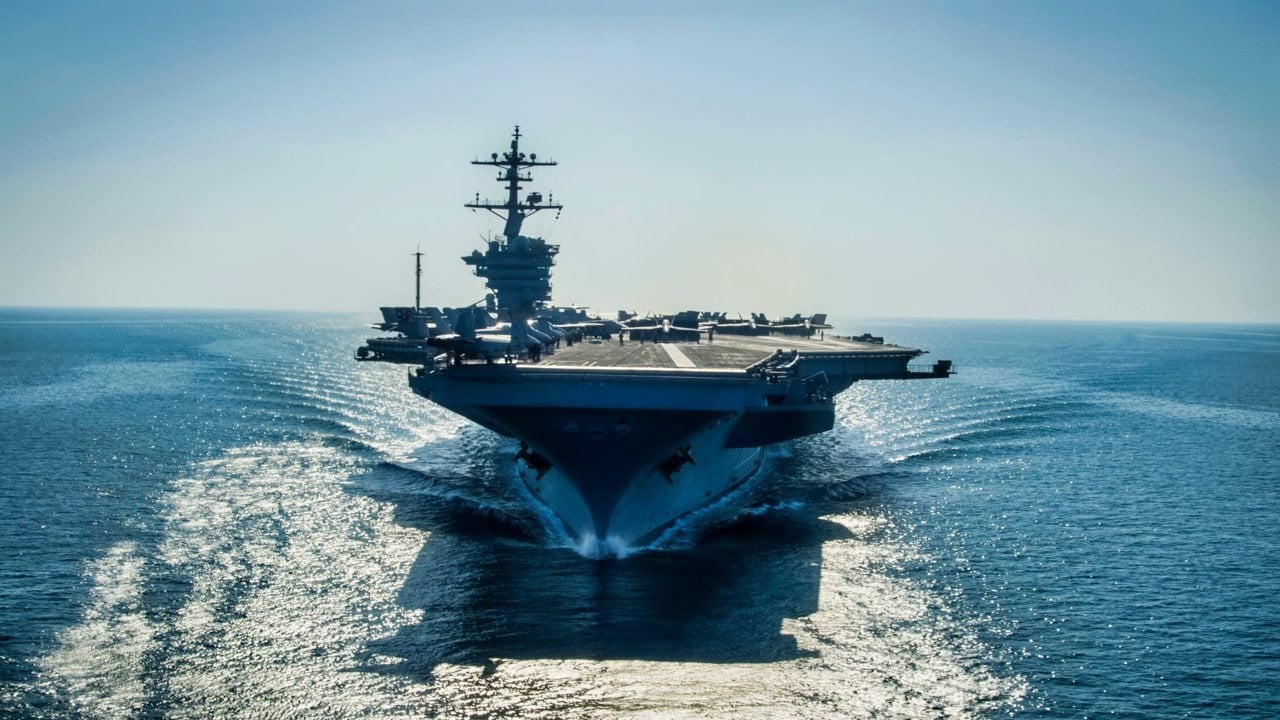Could Houthi Anti-Ship Ballistic Missiles (ASBM) Sink a U.S. Navy Warship?
Houthi rebels in Yemen have amassed a remarkably diverse array of anti-ship weaponry, incorporating both cruise and ballistic missiles, thanks to China and Iran. Could they hit a U.S. Navy warship?
Could The Houthi's Anti-Ship Ballistic Missiles Sink a U.S. Warship? - The enemy only has to get lucky once. That is a fact that needs to be remembered as the United States Navy continues to fend off missile attacks in the Red Sea and Gulf of Aden.
The brave sailors on the U.S. Navy vessels must do everything right every single time. And even then, an enemy like the Houthi terrorists operating from Yemen only need to get lucky once. Right now, they're playing the lottery – albeit instead of tickets, they have an arsenal of anti-ship ballistic missiles (ASBM) and anti-ship cruise missiles (ASCM).
"On Jan. 14 at approximately 4:45 p.m. (Sanaa time), an anti-ship cruise missile was fired from Iranian-backed Houthi militant areas of Yemen toward USS Laboon (DDG 58), which was operating in the Southern Red Sea. The missile was shot down in vicinity of the coast of Hudaydah by U.S. fighter aircraft. There were no injuries or damage reported," United States Central Command (CENTCOM) announced on Sunday.
The missile that was fired on Sunday came after ASBMs were fired at commercial shipping operating in the Gulf of Aden on Thursday. That was the 27th Houthi attack on international shipping since November 19, 2023.
ASBM Attack by the Houthis: Improving the Odds
The odds of winning the lottery, especially games of chance like Power Ball, are literally millions to one. Even then someone eventually "hits the jackpot," which is the whole point – and it keeps people playing. The Houthis are now playing a similar game, and while the U.S. has the odds in its favor (like a casino to keep with the gambling metaphor), it would be unwise to suggest the odds are so great that the terrorists won't get lucky.
As the International Institute for Strategic Studies warned, "Over just a few years, Houthi rebels in Yemen have amassed a remarkably diverse array of anti-ship weaponry, incorporating both cruise and ballistic missiles, which they have recently used to threaten shipping in the Red Sea. The critical role that Iran has played in this build-up raises broader questions about Tehran's regional strategy."
IISS further noted that it was in late 2014 and early 2015 when the Houthis acquired their first anti-ship cruise missiles. Those were largely obsolescent Soviet-made P-21 and P-22- missiles (RS-SSC-3 Styx), as well as the slightly more modern Chinese C-801 (YJ-81/CH-SS-N-4 Sardine), from Yemeni military stocks. Designated Rubezh B21/B22 and Al-Mandab 1, these missiles continued to be paraded by the Houthis as a show of their strength and likely an attempt to legitimize their claim as Yemen's government. It remains unclear, however, if those missiles remain operational or how many they possess. The P-21/P-22 anti-ship cruise missiles have a range of just 80km, while the Chinese-made C-801 is limited to only 40km.
More worrisome for commercial vessels, and even the U.S. Navy is the fact that Iran has supplied the Al Mandad 2, which has a range of 300km, and the Sayyad, an anti-ship version of the Paveh/351. The radar-homing anti-ship missile has a range of 800km or nearly 500 miles.
The Houthis also have a variety of ASBMs including the Asef, an Iranian-made anti-ship version of the Fateh 313, and the Faleq, Tehran's anti-ship version of the Raad 500. Each has a range greater than 450km.
The capabilities of the systems are still largely unknown, however. As IISS added, "ASBM technology is complex, and Iranian officials have admitted to finding its development challenging. While it remains unknown how reliably Iranian ASBMs perform and whether they can be used against mobile targets, Iran has released footage of their successful test against static targets."

Moreover, as IISS further suggested, the Houthis continue to face a number of challenges. They lacked advanced intelligence, surveillance, and reconnaissance (ISR) tools – notably maritime patrol aircraft and satellites. But they do have unmanned aerial vehicles (UAVs), while they can rely on open-source information on maritime traffic as well as from the Behsahd. It is officially an Iranian cargo ship, but is widely suspected of being a spy ship. It has been in the Red Sea since 2021 after Tehran recalled the Saviz, another suspected ship that suffered damage in an attack attributed to Israel. The Behshad reportedly serves as an Islamic Revolutionary Guards Corps forward-operating and reconnaissance base. In addition, Tehran may have supplied the Houthis with coastal radar systems.

While the Houthis have linked their current campaign targeting shipping to the war in Gaza, it should be noted that many of the weapons and systems were provided by Tehran to the Houthis long before the conflict between Israel and Hamas began last October. Both the Islamic Republic and its proxies are playing a long game – one they hope will win a jackpot, like sinking an American warship.

They only need to get lucky once.
Author Experience and Expertise: Peter Suciu
Peter Suciu is a Michigan-based writer. He has contributed to more than four dozen magazines, newspapers, and websites with over 3,200 published pieces over a twenty-year career in journalism. He regularly writes about military hardware, firearms history, cybersecurity, politics, and international affairs. Peter is also a Contributing Writer for Forbes and Clearance Jobs. You can follow him on Twitter: @PeterSuciu. You can email the author: [email protected].


